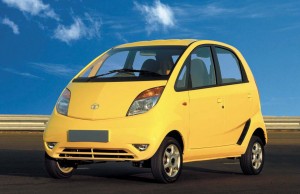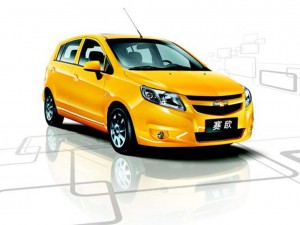After flunking a widely reported crash test in Latin America, General Motors will reverse course and add not only airbags but a variety of other safety features in all vehicles it sells worldwide.
The move could prompt other mainstream manufacturers to follow suit, despite the added cost, as government regulators and safety advocates around the world press to lower a global highway death total estimated at 1.25 million last year.
GM says it now plans to spend about $5 billion to bring its worldwide fleet up to higher safety standards, a move that will target emerging markets such as Africa, Latin America and smaller Asian countries like Vietnam and Indonesia. Chinese regulators have already been ramping up safety requirements in recent years.
The turnaround follows the poor performance by a version of the Chinese-made Chevrolet Sail subcompact sold in parts of South America. The Latin New Car Assessment Program – an independent testing group similar to the Insurance Institute for Highway Safety in the U.S. – gave the Sail zero stars after tests that showed it both unstable and poorly equipped for a crash.
Not only are there no airbags in the subcompact hatchback, but the Sail doesn’t even have three-point seatbelts in all positions. And it’s not alone. In some markets, even the most rudimentary safety equipment, such as antilock brakes are not mandatory and not even offered as options on some lower-end models.

Global consumers are becoming less tolerant of poor safety; demand for the Tata Nano plunged after a series of fires.
(US automakers asking insurance industry help to get recalled cars repaired. Click Here for more.)
Manufacturers often have defended such practices by insisting buyers couldn’t afford better-equipped vehicles and would otherwise opt for even more dangerous options like motor scooters. In some third world countries, it’s not uncommon to see entire families somehow squeezing onto a small scooter, and even minor crashes can result in multiple fatalities.
GM CEO Mary Barra defended the carmaker’s strategy earlier this year, insisting vehicles like the Sail were stripped down to keep them affordable. But Barra took heat in light of recent safety problems at the automaker, including its widely reported issues with defective ignition switches linked to over 120 U.S. deaths.
Barry had pledged to step up safety efforts in the home market after that scandal erupted in February 2014, and now intends to improve safety efforts abroad, as well.
Going forward, all GM vehicles will be equipped with at least basic airbags by 2019. What other safety devices will be added is unclear. But as systems like ABS and more advanced electronic stability control get into wider distribution, prices have fallen and made it possible to use such technologies in entry-level products.
(Ford F-150 the only big truck to pass IIHS crash tests. Click Here for the latest.)
The Latin New Car Assessment Program and other regional testing efforts have drawn more attention to global safety lapses, increasing consumer demand for more safety gear and better vehicle design among consumers.
Indian automaker Tata Motors learned of that shift the hard way after the closely watched debut of its Tata Nano a few years ago. Hailed as the world’s lowest-priced automobile, sales fell well short of expectations, especially after a series of fires and other safety problems charred the Nano’s image.
Safety experts believe that airbags and other technologies are in particular need in markets like China where roads are poorly marked, badly maintained and overcrowded, and where a generation of first-time owners have yet to fully understand and comply with basic rules of the road.
In the U.S., some form of so-called passive restraint system was made mandatory for drivers starting with the 1989 model-year. GM was among several makers taking heat early on for using cheaper automatic seatbelts rather than airbags. But a series of failures led to a switch to 100% airbags, federal rules later adding passenger-side bags, as well.
Since then, a mix of new federal rules and an increasing consumer focus on safety has resulted in the addition of numerous new features, such as stability control. In an unprecedented move, meanwhile, an industry-government consortium has announced plans to make forward collision warning with automatic emergency braking standard on virtually all U.S. vehicles by 2022.
(Carmakers need to be alert to the threat of terrorists hijacking high-tech vehicles, warns Justice Dept. official. Click Here for more.)

